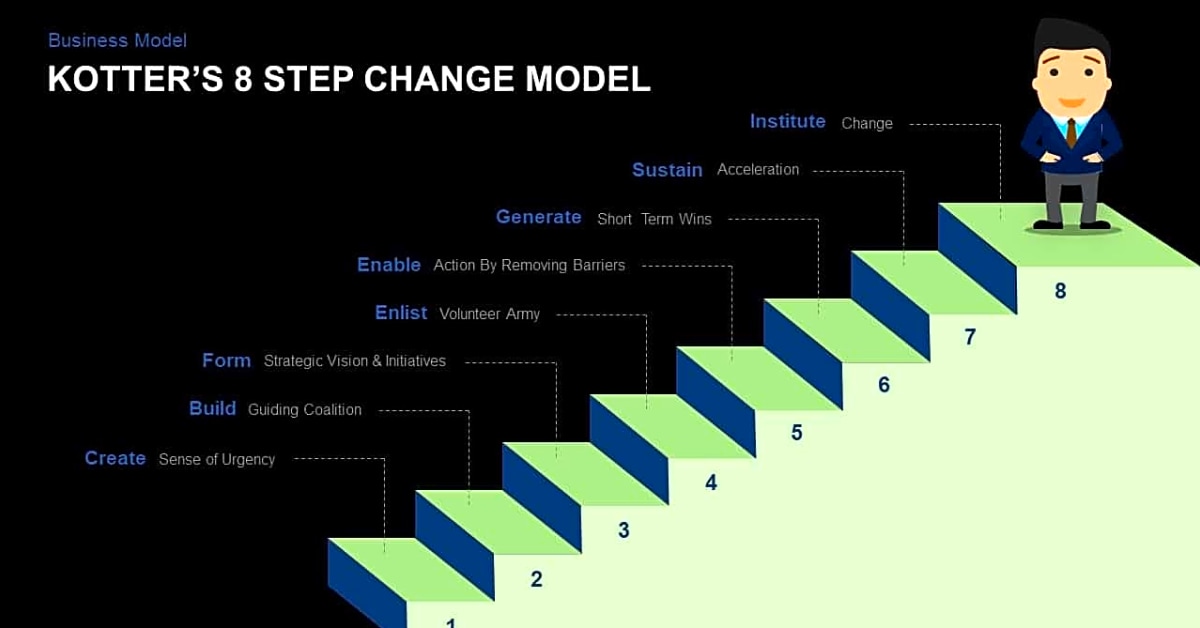Effective Strategies for Collaborative Decision-Making in Change Management
In today’s fast-paced business world, change is inevitable. Organizations must constantly adapt to stay competitive and relevant in their industries. However, implementing change can be a daunting task, requiring careful planning and execution. One key aspect of successful change management is collaborative decision-making. This involves involving all stakeholders and working together to make informed and effective decisions that will drive the change forward. In this article, we will explore effective strategies for collaborative decision-making in change management. We will discuss the importance of collaboration in the change management process and provide practical tips for fostering a collaborative environment. Whether you are a leader guiding your team through change or an individual navigating through change, this article will provide valuable insights on how to approach collaborative decision-making to ensure successful change management. So let’s dive in and discover the power of collaboration in managing change.
Collaborative decision-making in change management involves involving stakeholders in the decision-making process to ensure buy-in and ownership of the change. This approach is crucial as it helps to minimize resistance and increase the likelihood of successful implementation.
The benefits of collaborative decision-making in change management are numerous. Firstly, it promotes transparency and open communication, allowing all stakeholders to have a voice in the decision-making process. This leads to a better understanding of the change and its impact on individuals and the organization as a whole.
By involving stakeholders in the decision-making process, you are promoting a sense of ownership and investment in the change. This can lead to better outcomes and increased support from all parties involved. When individuals feel that their opinions are valued and taken into consideration, they are more likely to embrace the change and actively participate in its implementation.
Effective stakeholder involvement requires careful planning and execution. It is important to identify key stakeholders who will be impacted by the change and ensure their representation in the decision-making process. This can include employees, managers, customers, suppliers, and other relevant stakeholders.
There are various techniques that can be used to facilitate collaboration and reach consensus among stakeholders. One approach is to hold group discussions or workshops where stakeholders can openly share their perspectives and ideas. This allows for a diverse range of viewpoints to be considered and encourages collaboration and problem-solving.
Another technique is to use surveys or questionnaires to gather feedback from stakeholders. This can provide valuable insights into their thoughts and concerns, allowing for a more informed decision-making process.
Organizations that have successfully used collaborative decision-making in their change management processes have seen positive results. For example, global consulting firm Accenture implemented a new performance management system with input from employees at all levels. This led to a smoother transition and increased employee satisfaction with the new system.
In conclusion, collaborative decision-making is an essential aspect of change management. It promotes transparency, ownership, and collaboration, leading to better outcomes and increased support from stakeholders. By involving stakeholders effectively and utilizing techniques for collaboration and consensus-building, organizations can successfully navigate change and drive positive results.
The Importance of Collaboration in Change Management
Collaboration is a key factor in successful change management. In order for any organization to effectively implement change, there must be a collaborative effort among all stakeholders involved. This includes employees at all levels, as well as managers, leaders, and external partners.
When it comes to change management, collaboration allows for a more holistic and comprehensive approach. By involving all individuals who will be impacted by the change, organizations can gain valuable insights and perspectives that may have otherwise been overlooked. This not only helps to identify potential challenges and barriers, but also creates a sense of ownership and commitment among all parties involved.
In addition, collaboration promotes transparency and open communication, which are crucial for managing expectations and addressing any concerns or resistance to change. By working together, organizations can create a supportive and inclusive environment where everyone feels heard and valued.
Furthermore, collaboration fosters a sense of teamwork and unity. When employees and leaders come together to work towards a common goal, it creates a shared sense of purpose and motivation. This can help alleviate any fears or anxieties about the change and instead promote a sense of excitement and enthusiasm for the potential opportunities it may bring.
In conclusion, collaboration is essential for successful change management because it allows for a more well-rounded and inclusive approach, promotes transparency and open communication, and fosters teamwork and unity. By prioritizing collaboration in change management strategies, organizations can increase the likelihood of successfully navigating through periods of change and emerge stronger and more resilient.
Effective Techniques for Collaborative Decision-Making
Collaborative decision-making is a crucial aspect of successful change management. It involves involving stakeholders and reaching consensus to ensure that everyone is on board with the proposed changes. In this section, we will discuss some practical tips and techniques for effective collaborative decision-making in change management.
1. Communication is key
Effective communication is essential for successful collaboration. It is important to clearly and consistently communicate the reasons behind the proposed changes, the expected outcomes, and how it will affect different stakeholders. This will help to build trust and understanding among team members.
2. Involve all stakeholders
It is important to involve all stakeholders in the decision-making process. This includes employees, managers, and other key individuals who will be affected by the change. By including everyone, you can gain different perspectives and ideas that can lead to better decision-making.
3. Encourage open and honest discussions
In order to reach a consensus, it is important to encourage open and honest discussions among all stakeholders. This means creating a safe and non-judgmental space for people to express their opinions and concerns. By actively listening and addressing these concerns, you can reach a decision that works for everyone.
4. Use decision-making tools
There are various decision-making tools that can be used to facilitate collaboration and reach a consensus. These include SWOT analysis, brainstorming sessions, and voting systems. By using these tools, you can ensure that all stakeholders have a voice in the decision-making process.
5. Set clear timelines and responsibilities
To ensure effective collaboration, it is important to set clear timelines and responsibilities for each stakeholder. This helps to keep everyone accountable and on track towards reaching a decision. It also prevents any misunderstandings or delays in the decision-making process.
Conclusion
Collaborative decision-making is a crucial aspect of managing change effectively. By following these practical tips and techniques, you can involve stakeholders and reach a consensus that works for everyone. Remember to communicate effectively, involve all stakeholders, encourage open discussions, use decision-making tools, and set clear timelines and responsibilities. With these strategies in place, you can navigate organizational change successfully and turn it into an opportunity for growth and improvement.
Real-Life Examples of Successful Collaborative Decision-Making in Change Management
Collaborative decision-making plays a crucial role in successfully managing change within organizations. To further understand its impact, let’s look at some real-life examples of organizations that have effectively implemented this approach in their change management processes.
Example 1: Company X
Company X was facing a major shift in their industry and needed to adapt quickly to remain competitive. They involved all stakeholders in the decision-making process, including employees from different departments and levels. By leveraging their diverse perspectives and expertise, they were able to come up with innovative solutions that not only addressed the change but also improved overall operations.
Example 2: Organization Y
Organization Y was going through a restructuring process, and the management team knew it would be a challenging transition for employees. To ensure a smooth transition, they formed a cross-functional team consisting of representatives from all departments. This team collaborated on decision-making, resulting in a clear and transparent communication process that helped alleviate employee concerns and resistance to change.
These are just two examples of how collaborative decision-making can lead to successful change management. By involving all stakeholders and considering diverse perspectives, organizations can effectively navigate through change and achieve positive outcomes.
In conclusion, effective collaborative decision-making is crucial for successful change management. By involving stakeholders and promoting collaboration, organizations can minimize resistance and increase the likelihood of successful change implementation. Remember to continuously communicate and involve stakeholders throughout the change process to ensure their support and buy-in.









